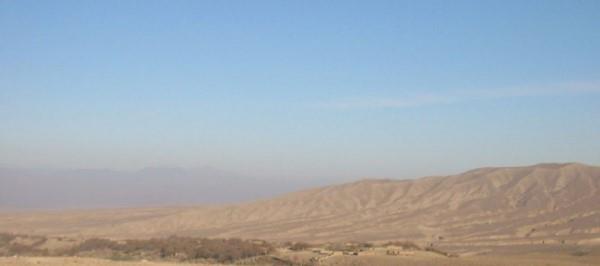
Southwest Afghanistan's Bare Land has Become Home to Up to 2.2 Million People
The study has found out that the largely unsettled, bare land at the beginning of the 21st century had become home to up to 2.2 million people in 2016.
'What is more, this frontier area is located beyond the reaches of the Helmand and Farah rivers and the canal system that the Afghan state built to increase the taxable agricultural area,' the report says and adds, 'Yet in 2016 there were 472,838 hectares of agricultural land, where there had only been 254,866 in 2008 and 143,060 in 2003.'According to the study, this expansion did not occur through state intervention or donor projects in the kind of large-scale irrigation works seen in the past, but was the result of households capturing and purchasing what had once been designated as 'government land,' then investing in improved technologies.
'Over time, and with further encroachment, communities were formed across these former desert areas and distinct patterns of land tenure, systems of taxation and governance could be found,' the study explains, 'all this was achieved in areas where there had been nothing but sand and rocks 20 years before, and where the Afghan state had no formal presence.'The study examines what led to the settlement and transformation of this former desert land and shows that, were it not for illicit opium poppy, these developments would not have occurred.
The paper is divided into five sections. Section 2 outlines the methodology that provides a valuable and robust basis for examining illicit economies, particularly in remote and insecure locations.Section 3 describes how the geographic distribution of opium poppy cultivation in Afghanistan has emerged, consolidated and adapted to state-building and to counter-narcotics efforts while Section 4 focuses on the settlement of the former desert lands of the Southwest. It uses the results of geospatial analysis and household interviews to chart the different patterns of settlement in the former deserts of Helmand and Bakwa and the various socioeconomic groups involved.
Section 5 examines the role of opium as a source and motivation for capital investment and how farmers have adapted to the continuing challenges of desert terrain, including high production costs, diminishing yields, and a falling water table. Section 6 concludes that, while opium poppy has served as a lifeline to the burgeoning rural population in these former desert areas, the rapid adoption of solar power and chemical herbicides could threaten the long-term stability of agricultural production.The study is based on in-depth fieldwork and high-resolution imagery undertaken between 2011 and 2017 in 20 research sites in two former desert areas. Fieldwork consisted of 1,078 interviews with rural households and supplementary data collection among those providing services to these desert communities. In total, 742 interviews were conducted with farmers in eight research sites in the area north of the Boghra canal in Helmand Province and 336 interviews with farmers in 12 research sites in Bakwa in Farah Province.
A further 40 interviews were conducted with individuals providing services to the population in the former desert areas in the cities of Lashkar Gah, Gereshk, Farah and Delarem, including those trading solar panels, diesel, pesticides and the leasing of drilling equipment for sinking deep wells.High-resolution, remote sensing imagery was integral to the research design. Geospatial data on vegetation was combined with high-resolution imagery to examine the history of settlement in the former desert area. Research sites were then identified based on the duration of settlement, ranging from sites that showed evidence of agricultural production prior to 2003 to those settled in 2013. Remote sensing imagery was then used to verify that fieldworkers had been to the identified sites, and examine the results of primary data collection.
High-resolution imagery allowed further exploration of primary research findings including the identification of crops under cultivation and of new or damaged physical infrastructure, and measurement of changes in the cultivated areas. Finally, geospatial analysis supported the extrapolation of research findings over a wider geographic area beyond the research sites themselves.'In Helmand, this is likely to lead to a return to the canal-irrigated areas of the districts of Lashkar Gah, Nad e Ali and Marjah, increasing the pressure for these areas to return to widespread opium poppy cultivation once again,' the study says, 'in Bakwa, those departing may return to Farah district, as well as central Helmand and it would appear that, for those that wish to see opium poppy cultivation curtailed, there is little room for optimism, other than a falling water table that could devastate the local economy.'

Legal Disclaimer:
MENAFN provides the
information “as is” without warranty of any kind. We do not accept
any responsibility or liability for the accuracy, content, images,
videos, licenses, completeness, legality, or reliability of the information
contained in this article. If you have any complaints or copyright
issues related to this article, kindly contact the provider above.


















Comments
No comment